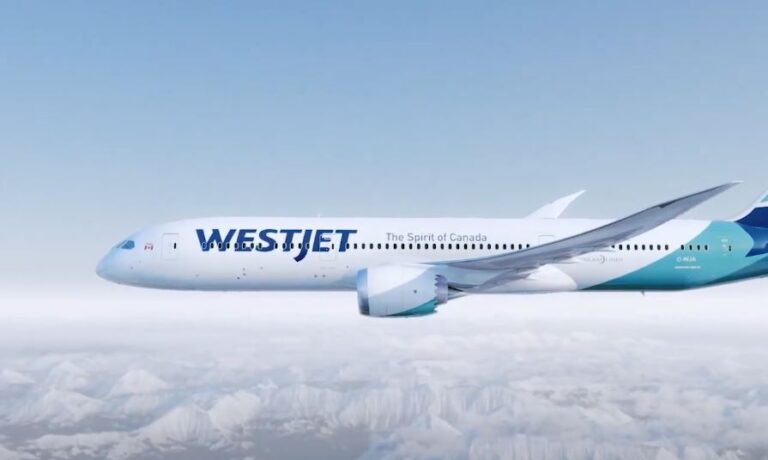WestJet experienced a cybersecurity incident on June 13, 2025, which subsequently prompted an urgent response that included regulatory coordination, forensic experts, and cautious public communication. Being one of the most reputable airlines in Canada, WestJet’s prompt disclosure demonstrated both a sense of responsibility and an understanding of the growing complexity of online threats. Even though flights continued to operate as planned, both travelers and analysts expressed concern about the impact on its digital infrastructure.
Users who tried to use the WestJet app or website in recent days encountered sporadic problems, ranging from unsuccessful login attempts to error messages while making reservations. Even though the airline acted swiftly to reassure passengers that operational safety was unaffected, the continuous challenges in obtaining services made the digital divide seem more real. The airline’s sleek exterior started to show the delicate relationship between its technology and passenger trust, like a well-oiled machine suddenly missing a gear.
WestJet Cybersecurity Incident Summary
| Detail | Description |
|---|---|
| Incident Start Date | June 13, 2025 |
| Systems Affected | Internal Systems, WestJet App, Website |
| Airline Operations | Flights remain operational; digital disruptions continue |
| Investigation Status | Ongoing with law enforcement and cybersecurity experts |
| Suspected Threat Type | Undisclosed; no confirmation of ransomware or malware yet |
| Public Advisories Issued | Users warned to be cautious with personal data |
| Notable Impact | Customer service delays; potential data risk under assessment |
| Regulatory Cooperation | Engaged with Transport Canada and law enforcement |
| Industry Risk Context | Rising trend of cyberattacks on airlines, airports, and aviation tech |
WestJet indicated its intention to not only contain the situation but also to exhibit transparency by collaborating with Transport Canada and integrating outside cybersecurity companies. The company’s consistent emphasis on data protection is especially noteworthy. WestJet cautioned customers against oversharing online, implying genuine risk without causing panic, even though it has not yet confirmed whether personal or financial information was accessed.
In the last ten years, the amount and sensitivity of data handled by airlines has remarkably resembled that of fintech companies. In exchange for seamless service, travelers divulge everything, including credit card information, passport information, and health disclosures. These systems are not only targets but also jackpots as cybercriminals become more daring. The WestJet attack is similar to events at Seattle-Tacoma International Airport and Japan Airlines, where ransomware demands and stolen files led to extensive disruption and harm to the airline’s reputation.
WestJet has significantly enhanced the clarity of its crisis communication by deploying internal teams strategically and providing frequent updates. The airline has decided not to make any assumptions about the type of intrusion. Despite being measured, that silence has allowed for public conjecture. Online discussions were stoked by the breach’s timing, which occurred just days before the G7 summit in neighboring Kananaskis. Some speculated that increased international data flows might have occurred at the same time as the attack. The incident serves as a reminder that even airlines can be inadvertently drawn into international conflicts, even though no direct link has been found.
The aviation industry became particularly dependent on tech ecosystems during the pandemic due to the acceleration of digital services, such as mobile boarding passes and touchless check-ins. Restoring systems and reaffirming its standing as a highly dependable travel partner are now WestJet’s challenges. Flying airplanes is no longer the only thing involved. With each ticket purchased, digital safety is ensured.
Cybersecurity might seem like an afterthought to airlines in their infancy. This breach emphasizes the necessity of ongoing vigilance for a mature player such as WestJet. The airline hopes to find vulnerabilities that might otherwise go unnoticed until it’s too late by utilizing forensic insights and advanced analytics. This move toward long-term digital hardening is especially advantageous for the industry as a whole, not just for WestJet.
WestJet made an attempt to maintain composure under pressure, as evidenced by the measured tone used throughout its response. Its repeated use of the phrase “significant progress” conveys a cautiously upbeat attitude. However, the need for a quicker resolution became apparent as customers vented their frustrations on social media, many of them with hashtags like #WestJetBreach. Frequent travelers now consider even brief app malfunctions to be service interruptions due to the rise in digital expectations.
This breach is more than just a technical glitch when considering the public perception of aviation. It is a turning point in branding. A data incident undermines customer confidence, much like a mechanical problem undermines an airplane. Travel annoyances have previously been posted online by celebrities like Drake and Ryan Reynolds, who have close ties to Canada and flying. Both have refrained from commenting on the WestJet situation, but even in cases where flight schedules are unaffected by technical issues, reputational harm can spread quickly online.
WestJet has avoided the worst-case scenario by combining regulatory diligence with clear messaging. A week after the breach, the story is still ongoing due to the incomplete resolution. Once a supporting role, cybersecurity is now firmly in the spotlight. Airlines now serve as guardians of digital identities and transactional integrity in addition to being carriers.
Aviation executives will probably reinterpret operational resilience in the upcoming years to incorporate secure APIs, encrypted data flows, and zero-trust frameworks in addition to engines, pilots, and safety exercises. In the future, boardrooms and cybersecurity conferences might use WestJet’s response as an example of containment and customer engagement. How the business responds to this incident—improving procedures, making investments in redundancy, and openly communicating every stage—will determine its capacity to win back trust.
